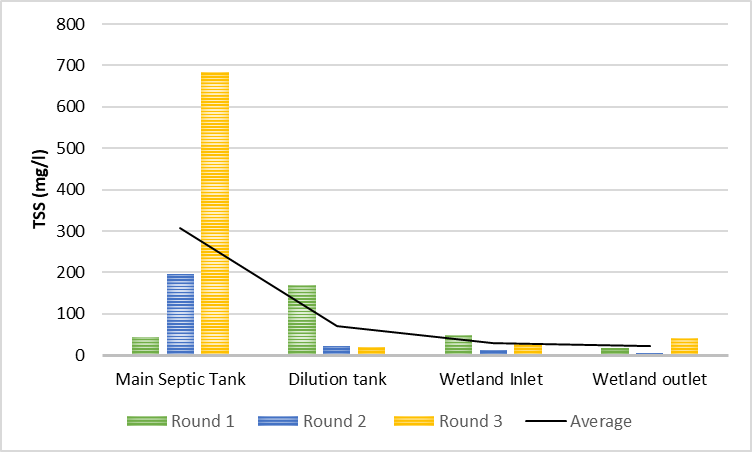A Wastewater Treatment Using Constructed Wetland and Sustainable Climate Change Mitigation
Keywords:
Wastewater treatment, Constructed wetland, Climate change mitigationAbstract
Introduction/Importance of Study: Addressing wastewater treatment and sanitation challenges is particularly crucial in rural areas experiencing environmental stress. As interest in recycling wastewater grows and water scarcity becomes more pressing, constructed wetlands emerge as a cost-effective solution, especially in arid regions.
Novelty Statement: This study examines a constructed wetland at Mehran UET that effectively treats wastewater while promoting sustainable water reuse. By reusing water and functioning as a carbon sink, this approach addresses water scarcity and helps mitigate climate change effects.
Material and Methods: Water samples were collected from selected locations within the constructed wetland, chosen for their effectiveness in contaminant removal. Key wastewater parameters—total suspended solids (TSS), total nitrogen (TN), total phosphorus (TP), chemical oxygen demand (COD), and biological oxygen demand (BOD)—were measured for these samples.
Results and Discussion: The removal of total suspended solids was observed to decrease from an average of 31 mg/l in the influent to 21 mg/l in the effluent. BOD and COD concentrations decreased from 137 mg/l to 99 mg/l and from 212 mg/l to 131 mg/l, respectively. Nitrogen concentrations in the influent were 20 mg/l, with removal to 11 mg/l in the effluent. Phosphorus removal was observed to reduce from 23 mg/l to 12 mg/l.
Concluding Remarks: Constructed wetlands enhance community resilience to climate change by offering decentralized, flexible water management solutions tailored to local conditions and climate scenarios. They diversify water sources and reduce dependence on traditional supplies.
References
Z. H. A. Alnaser, S. R. Chowdhury, and S. A. Razzak, “Constructed Wetlands for Wastewater Treatment in Saudi Arabia: Opportunities and Sustainability,” Arab J Sci Eng, vol. 48, no. 7, pp. 8801–8817, Jul. 2023, doi: 10.1007/s13369-022-07411-2.
X. Nan, S. Lavrnić, and A. Toscano, “Potential of constructed wetland treatment systems for agricultural wastewater reuse under the EU framework,” Journal of Environmental Management, vol. 275. Academic Press, Dec. 01, 2020. Doi:10.1016/j.jenvman.2020.111219.
S. A. A. A. N. Almuktar, S. N. Abed, and M. Scholz, “Wetlands for wastewater treatment and subsequent recycling of treated effluent: a review,” Environmental Science and Pollution Research, vol. 25, no. 24. Springer Verlag, pp. 23595–23623, Aug. 01, 2018, doi: 10.1007/s11356-018-2629-3.
G. D. Gikas and V. A. Tsihrintzis, “Municipal wastewater treatment using constructed wetlands,” 2014.
N. A. Khan et al., “Horizontal subsurface flow Constructed Wetlands coupled with tubesettler for hospital wastewater treatment,” J Environ Manage, vol. 267, Aug. 2020, doi: 10.1016/j.jenvman.2020.110627.
C. M. Huang, C. S. Yuan, W. Bin Yang, and L. Yang, “Temporal variations of greenhouse gas emissions and carbon sequestration and stock from a tidal constructed mangrove wetland,” Mar Pollut Bull, vol. 149, Dec. 2019, doi: 10.1016/j.marpolbul.2019.110568.
M. S. Gaballah, K. Ismail, D. Aboagye, M. M. Ismail, M. Sobhi, and A. I. Stefanakis, “Effect of design and operational parameters on nutrients and heavy metal removal in pilot floating treatment wetlands with Eichhornia Crassipes treating polluted lake water”, doi: 10.1007/s11356-021-12442-7/Published.
L. Grinberga et al., “Analysis of the removal of BOD5, COD, and suspended solids in subsurface flow constructed wetland in Latvia,” ACTA SCIENTIARUM POLONORUM - Architectura Budownictwo, vol. 20, no. 4, pp. 21–28, May 2022, doi: 10.22630/aspa.2021.20.4.31.
M. Mahmudul Kobir, S. Ali, S. Ahmed, S. I. Sadia, and M. A. Alam, “Article no.AJOGER.111773 Original Research Article Kobir et al,” 2024. [Online]. Available: https://www.sdiarticle5.com/review-history/111773
P. K. Sharma, D. Minakshi, A. Rani, and P. Malaviya, “Treatment efficiency of vertical flow constructed wetland systems operated under different recirculation rates,” Ecol Eng, vol. 120, pp. 474–480, Sep. 2018, doi: 10.1016/j.ecoleng.2018.07.004.
R. Baird et al., Standard Methods for the Examination of Water and Wastewater.
D. Minakshi, P. K. Sharma, A. Rani, P. Malaviya, V. Srivastava, and M. Kumar, “Performance evaluation of vertical constructed wetland units with hydraulic retention time as a variable operating factor,” Groundw Sustain Dev, vol. 19, Nov. 2022, doi: 10.1016/j.gsd.2022.100834.
M. I. Fernandez-Fernandez, P. T. M. de la Vega, M. A. Jaramillo-Morán, and M. Garrido, “Hybrid constructed wetland to improve organic matter and nutrient removal,” Water (Switzerland), vol. 12, no. 7, Jul. 2020, doi: 10.3390/w12072023.
M. E. Khalifa, Y. G. A. El-Reash, M. I. Ahmed, and F. W. Rizk, “Effect of media variation on the removal efficiency of pollutants from domestic wastewater in constructed wetland systems,” Ecol Eng, vol. 143, Jan. 2020, doi: 10.1016/j.ecoleng.2019.105668.
D. Were, F. Kansiime, T. Fetahi, A. Cooper, and C. Jjuuko, “Carbon Sequestration by Wetlands: A Critical Review of Enhancement Measures for Climate Change Mitigation,” Earth Systems and Environment, vol. 3, no. 2. Springer, pp. 327–340, Aug. 01, 2019, doi: 10.1007/s41748-019-00094-0.
R. Yang and Q. Yang, “A review of emerged constructed wetlands based on biochar filler: Wastewater purification and carbon sequestration/greenhouse gas reduction,” Environmental Engineering Research, vol. 29, no. 2, pp. 230105–0, Jun. 2023, doi: 10.4491/eer.2023.105.

Downloads
Published
How to Cite
Issue
Section
License
Copyright (c) 2024 50SEA

This work is licensed under a Creative Commons Attribution 4.0 International License.




















